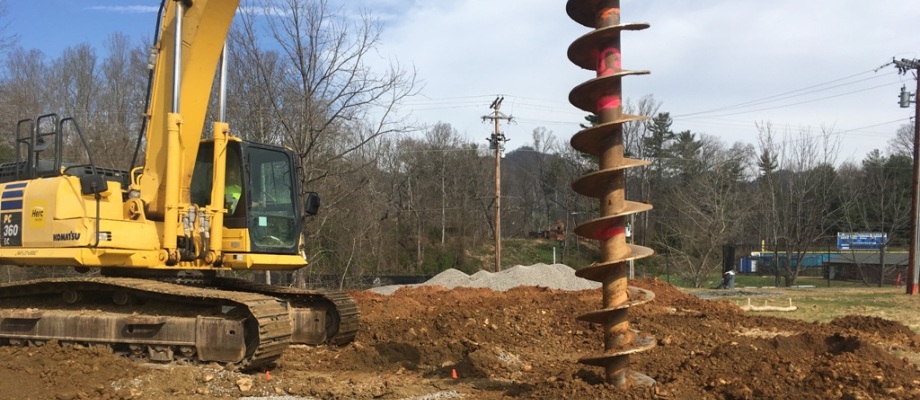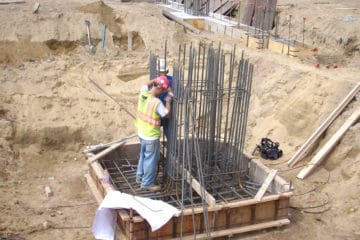Exactly How a Skilled Tailings Engineer Can Maximize Your Mining Operations
Wiki Article
The Relevance of Dirt Evaluation and Site Examination in the Geotechnical Sector: Ensuring Security and Security in Civil Engineering
In the geotechnical market, dirt evaluation and site examination are foundational components that underpin the safety and security and stability of civil engineering projects. These processes not only reveal the attributes of subsurface materials but also educate important choices regarding design and building and construction methods. By completely understanding soil buildings, engineers can preemptively resolve prospective challenges, inevitably safeguarding architectural integrity. The ramifications of these examinations expand beyond immediate project success; they can affect long-lasting sustainability and strength. As we check out the ins and outs of these techniques, it becomes apparent that their significance can not be overstated.Understanding Dirt Properties
In the world of geotechnical design, a thorough understanding of soil homes is paramount for notified decision-making and effective project design. The characterization of soil involves the assessment of different physical and mechanical properties, such as grain dimension circulation, plasticity, cohesion, shear, and permeability toughness. These buildings dictate just how dirt behaves under different loading problems and ecological impacts, making them critical for assessing website suitability for construction jobs.Dirt classification systems, such as the Unified Soil Category System (USCS) and the AASHTO classification, give frameworks for grouping soils based on their qualities. This category aids engineers in anticipating actions under stress and anxiety, water circulation, and settlement, thus affecting layout choices and building and construction strategies.
Additionally, the interaction between soil and surrounding frameworks is an essential factor to consider in geotechnical engineering. Comprehending dirt residential or commercial properties helps determine prospective challenges, such as liquefaction in earthquake-prone locations or excessive negotiation in soft soils. By completely evaluating these homes, geotechnical engineers can make certain the security, security, and long life of frameworks, inevitably adding to the total durability of civil design projects.
Techniques of Soil Analysis

In-situ tests include strategies such as Typical Penetration Examinations (SPT), Cone Penetration Examinations (CPT), and vane shear examinations. SPT evaluates the resistance of dirt to infiltration, providing information on thickness and toughness, while CPT determines dirt resistance and pore stress, yielding constant accounts of dirt stratigraphy. Vane shear tests are specifically useful for assessing the shear toughness of cohesive soils.
Research laboratory examinations match these in-situ evaluations and include tasting dirt for controlled testing. Usual lab techniques include Atterberg limitations, which identify the plasticity qualities of fine-grained soils, and compaction examinations, which analyze moisture-density relationships. Additional examinations, such as triaxial compression and unconfined compression tests, are carried out to examine the shear stamina of dirt samples under different problems.
Duty of Website Investigation
Website investigation plays a critical function in the geotechnical design process, acting as the foundation for comprehending subsurface problems. This extensive analysis includes methodical expedition of soil and rock properties, groundwater degrees, and other geological features that influence project security and security.Generally, site examinations incorporate a variety of methods, consisting of drilling boreholes, tasting, and in-situ screening. These methods provide critical data on the physical and mechanical characteristics of the ground, educating engineers regarding prospective obstacles such as soil negotiation, bearing ability, and incline stability.
In addition, site examination helps with the recognition of unsafe materials and contaminants, enabling the execution of proper removal actions. By establishing an exact subsurface account, website examinations assist to reduce dangers connected with building, ensuring that tasks follow safety criteria and guidelines.
The findings from a complete site investigation not only guide design decisions but likewise influence construction methodologies and timelines. In summary, the relevance of website investigation can not be overstated; it is an essential step in the geotechnical engineering process, preparing for effective job execution while prioritizing public security and ecological stability.
Impact on Task Layout
An extensive understanding of dirt qualities substantially influences task layout in the geotechnical sector. Dirt evaluation educates designers about the mechanical homes, composition, and behavior of the ground, which are essential factors in figuring out the expediency and safety of a building and construction task. Precise information on soil permeability, stamina, and compressibility permit the advancement of efficient structure layouts, making certain that structures are sufficiently supported and secure throughout their life-span.Furthermore, the presence of impurities or unpredictable dirt layers can prompt modifications in job style, such as picking alternate building techniques or materials. This positive technique decreases risks associated to dirt settlement, too much loading, or lateral activity, therefore safeguarding both the stability of the structure and public safety and security.
The assimilation of soil evaluation into job layout also promotes conformity with regulative demands and ecological considerations. By attending to soil-related difficulties early in the style procedure, designers can optimize resource allotment and lower prospective delays and costs linked with unanticipated site conditions. Eventually, extensive dirt evaluation improves the total top quality and resilience of civil design jobs, causing more sustainable and resistant framework.
Study and Instances
Showing the crucial duty of soil analysis in the geotechnical industry, different instance research studies highlight its effect on project outcomes. One remarkable example is the construction of a skyscraper in downtown Los Angeles, where comprehensive dirt screening exposed unpredictable subsurface conditions. consulting engineer. By recognizing the presence of large clay, engineers had the ability to upgrade the structure, integrating deep pilings that guaranteed security and security, eventually preventing possible structural failures
Finally, a dam task in the Southeast faced delays as a result of unforeseen dirt disintegration problems. In-depth dirt analysis enabled designers to apply effective stabilization methods, guaranteeing that the dam met safety guidelines while sticking to the job timeline. These situations emphasize the requirement of extensive dirt analysis and site investigation, highlighting their necessary duty in achieving effective and risk-free civil design jobs.
Conclusion
To conclude, soil analysis and website examination are basic components of the geotechnical sector, playing a critical role in ensuring the safety and security and security of civil design jobs. By giving essential information on dirt buildings and subsurface problems, these procedures notify geotechnical engineers foundation layout and construction methodologies. Furthermore, detailed investigations add to danger recognition and risk mitigation, ultimately improving the durability and durability of structures while enhancing resource appropriation throughout the job lifecycle.In the geotechnical market, dirt evaluation and site investigation are fundamental aspects that underpin the safety and security and security of civil engineering tasks. Recognizing soil homes helps determine prospective obstacles, such as liquefaction in earthquake-prone locations or extreme settlement in soft dirts. SPT evaluates the resistance of dirt to infiltration, providing information on density and stamina, while CPT determines soil resistance and pore stress, generating continuous profiles of soil stratigraphy. These instances highlight the necessity of complete soil evaluation and site examination, highlighting their crucial function in achieving successful and secure civil design jobs.
In verdict, soil evaluation and website investigation are fundamental elements of the geotechnical market, playing a critical function in making certain the safety and security and security of civil engineering jobs.
Report this wiki page